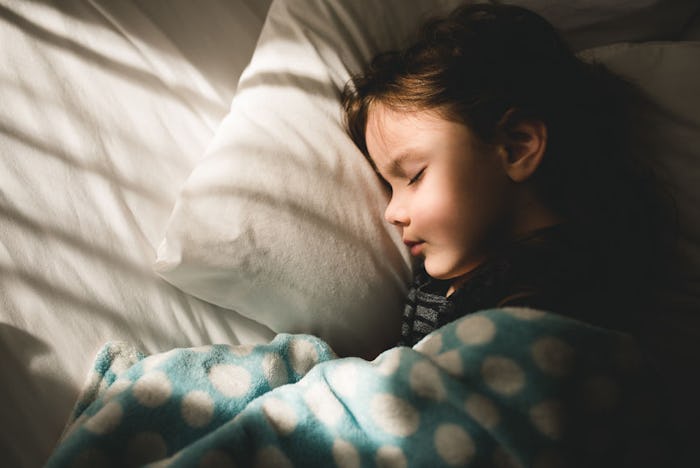We all know a good night's sleep, at any age, is important to our health and well being. Your toddler is (hopefully, for your sake) sleeping through the night by this point, but how comfortably? Do toddlers need pillows? And if so, when is the right age, and is the size of the pillow itself important?
Luckily, the threat of Sudden Infant Death Syndrome (SIDS) is no longer an issue, as it's primarily a concern for babies under the age of one year, according to the American Pregnancy Association. But that doesn't mean a million more questions won't present themselves now that you have a toddler running around, or sleeping through the night, as the case is here. Ah, parenting. The questions truly never end.
On that note, I hear you... believe me. My kids were not great sleepers as toddlers and I was always wondering what, if anything, I could do differently. Perhaps their pillows were an issue? Who knows! Let's take a deeper look. To answer the first question regarding toddlers needing pillows, it really depends on the child. They don't really NEED a pillow at this age, but at some point, they will probably want one to sleep more comfortably at night. This desire could come when a "big kid" bed is introduced, as they'll likely want their bed to look as grown up as possible.
Most experts agree that around 2 years old is the best time to introduce a child to a toddler pillow, or in some descriptions, when "their shoulders are wider than their head," according to the Child Safety Experts website. Additionally, if your child enjoys putting their head on your pillow during story time, or you've found them in bed laying against their favorite stuffed animal, chances are their very own pillow is in order.
Toddler pillows are half the size of a regular pillow, and there are plenty of things to consider before you purchase one. If your child suffers from any allergies, a hypoallergenic pillow is probably best. The Child Safety Experts site notes that "synthetic materials, while not ideal, are naturally resistant to molds and mildews." A child with no allergies will likely prefer a more natural pillow. Also, look for pillows that are machine washable. The younger the child is, the firmer the pillow should be.
Next, you'll need to teach your child how to use their pillow. In an interview with Care.com, Julie Kennedy, a licensed mental health counselor, said that "the best position is under the neck and head — not under the shoulders, which can roll, compress the lungs and curve the spine."
Potential problems are always a possibility, unfortunately, so be on the lookout for pillows that are too big, too soft and are filled with loose or dense fabric. Elizabeth Pantley, author of The No-Cry Sleep Solution for Toddlers and Preschoolers, also shared the following tip for testing the firmness of a pillow with Care.com: "Place it on a flat surface and push it down firmly in the middle. The quicker the pillow regains its shape, the firmer it is. If it hardly moves at all, it's too soft a pillow for your child."
As you navigate this new world of toddler-hood with a child suddenly in a "big kid" bed (that he can get in and out in the blink of an eye), I hope that a new pillow will be a benefit. And as the Sleep Lady says, "You may find that your child is not receptive to the introduction of a pillow. That’s okay! You can always try again in a few weeks or a month."
Good luck and good night, mamas!
